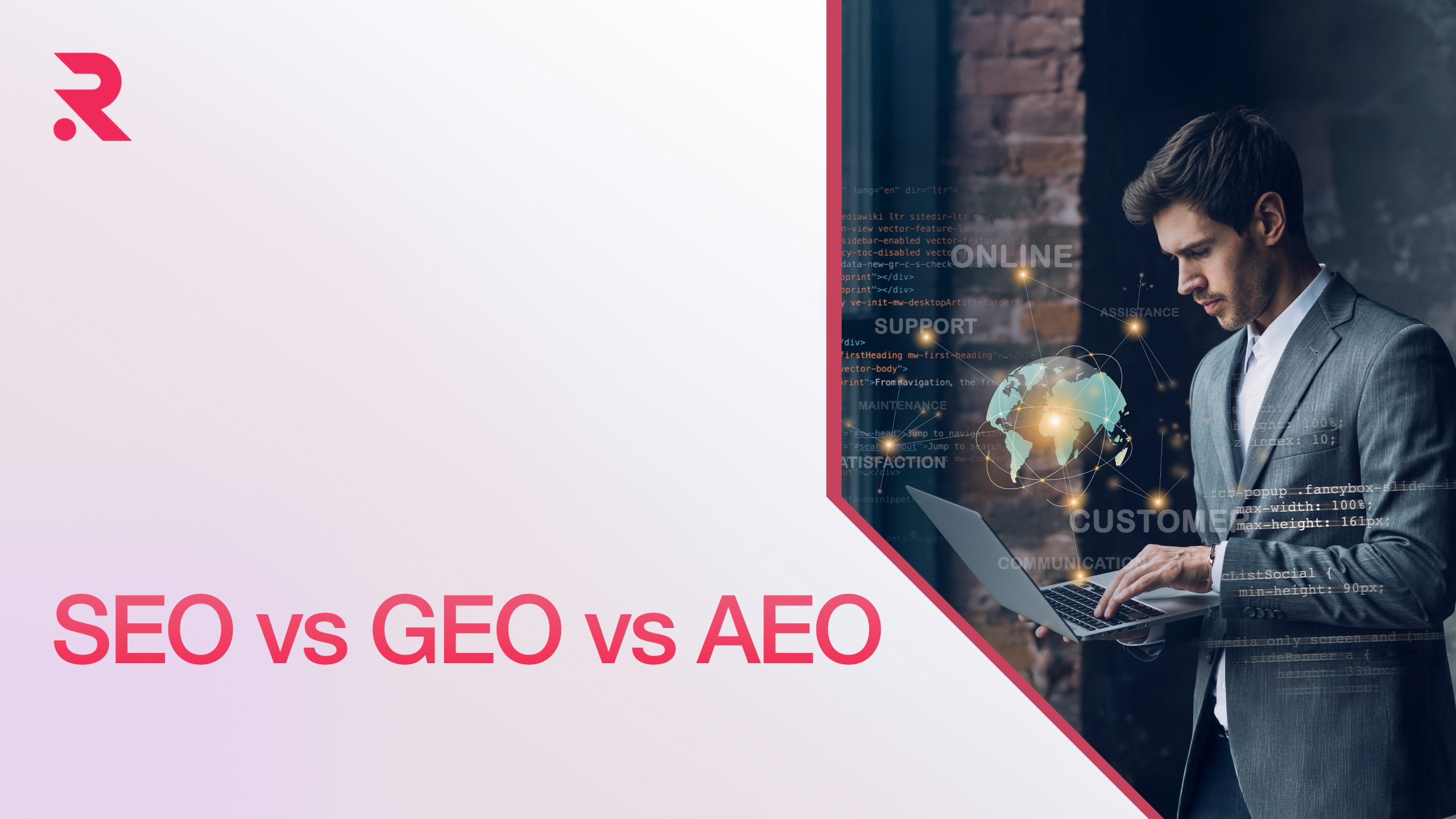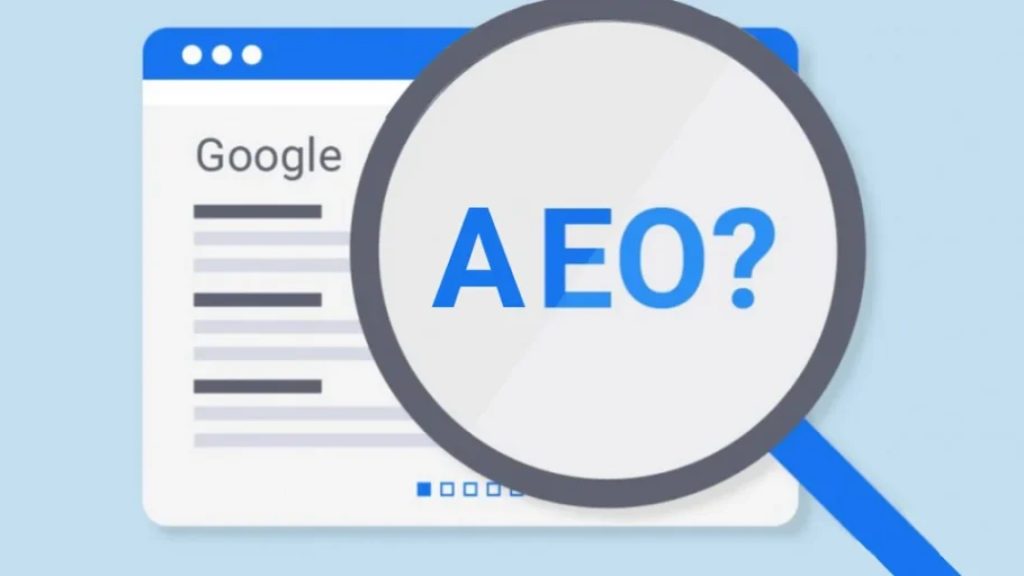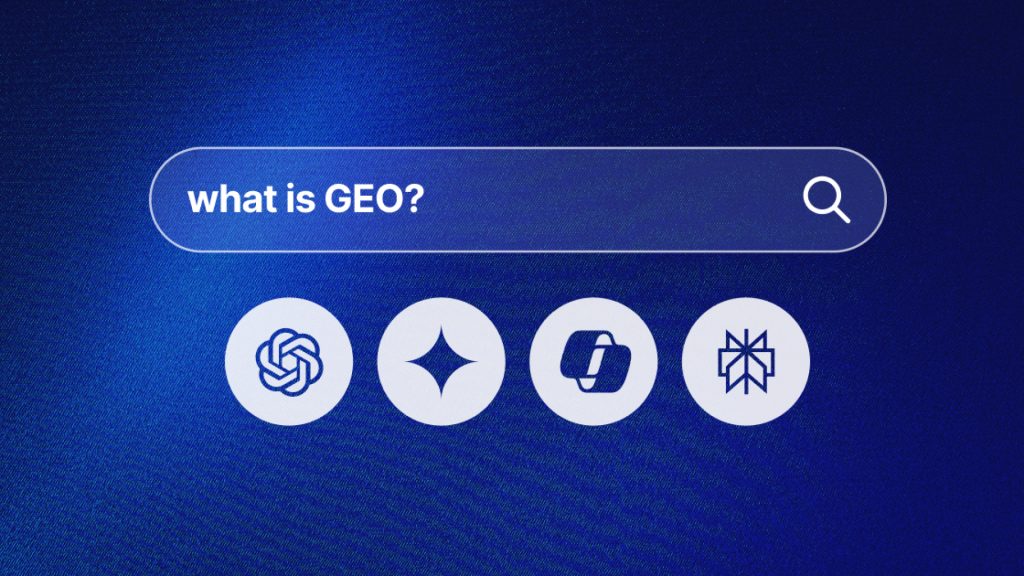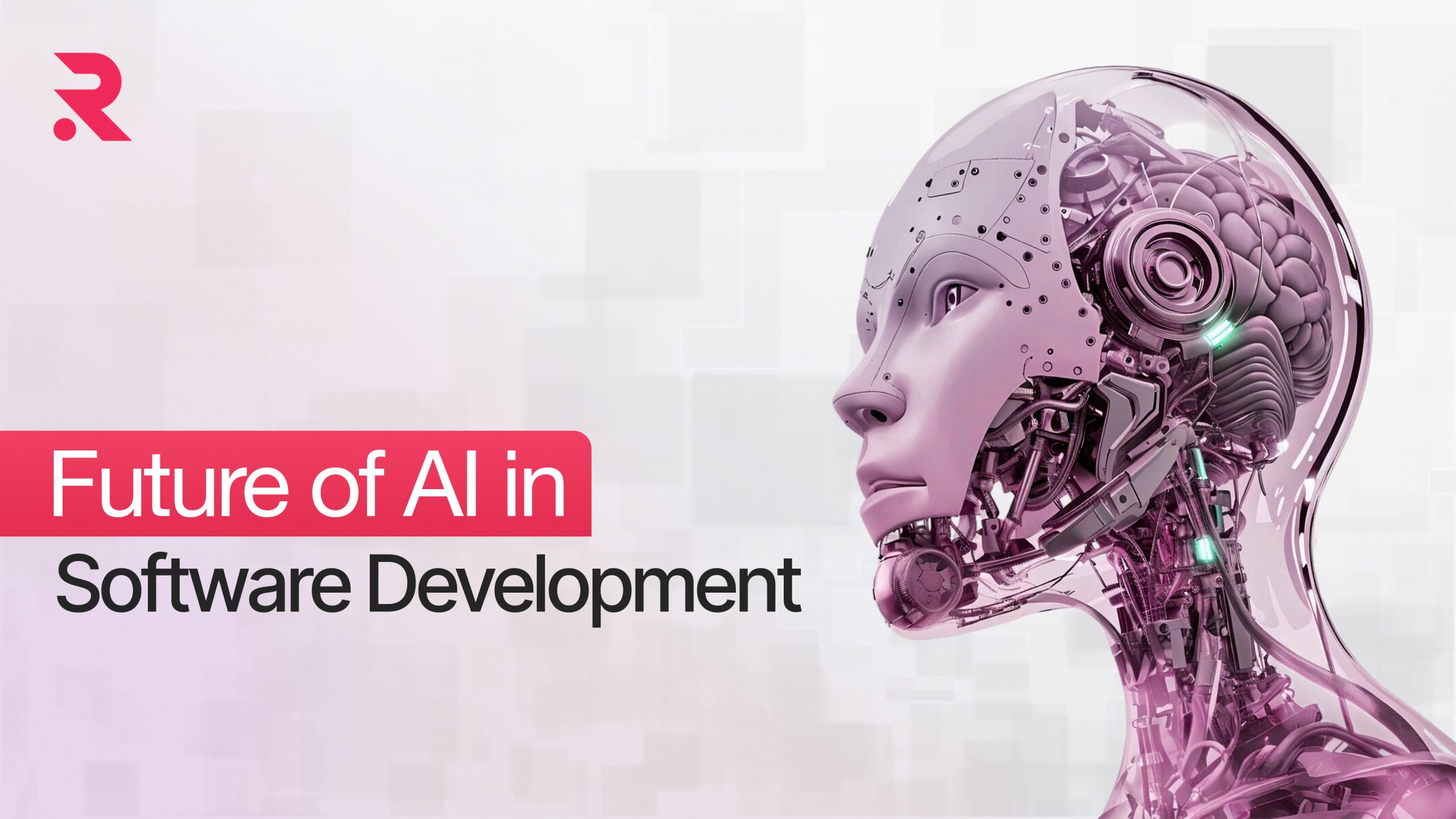SEO vs GEO vs AEO: The Future of Search Optimization in 2025
Want to keep yourself visible in a world where the, AI can give answers before Google? Find out how SEO, GEO, and AEO are changing the way of Search Optimization. Learn what your brand must do to stay in front.
- August 5, 2025
- by Tarun


Introduction
In 2025, search is about much more than where you show up on Google. AI tools, voice assistants, and new ways of finding answers are changing the game. Now, the old way of doing Search Engine Optimisation (SEO) works together with Answer Engine Optimisation (AEO) and Generative Engine Optimisation (GEO). These three are shaping what the Search Optimisation Future looks like. It is important for everyone in digital to know what, why, and how these work if they want to do well online.
The Evolution of Search: From Keywords to AI Conversations
Key Trends
- About 65% of searches end with no click. This means that most people get what they want right on the search page. So, they do not have to go to a website.
- Many people, about 72%, spend too much time starting a talk with a voice assistant just to find something.
- The entirely new shift has considered how people perceive and how they want to practice SEO because of AI being embedded in major parts of SEO now: More than 85% of digital marketers are now working on some or the other form of AI in SEO.
- Presently, more than 84% of searches on Google have an AI-generated short description. How are people really searching for information? All these are changing!
What is SEO in 2025?
SEO (Search Engine Optimization) is the process of getting a website to the first position of search engine results. It helps people to find a particular site whenever they use Google or other search engines so that traffic can be generated for the site.
Core Components

- Keyword Research: AI tools now let us see new search patterns before they get big.
- On-Page SEO: This covers things like good titles, clear meta descriptions, and links inside your website.
- Technical SEO: AI tools in technical SEO help find crawl problems and can tell you how to fix them right away.
- Backlinks: These are still important, but the quality and how your links relate to the content matter more than how many you have.
Example Ecommerce SEO
A brand that makes “Ecommerce Websites” could:
- Use AI tools to find the top ecommerce keywords that people are talking about now.
- Write blog posts like “Top Ecommerce Agency in 2025.”
- Make your product pages better by using schema markup and images that load fast.
- Try to get backlinks from people and websites in the same space.
Need SEO Guidance and Support to Boost your Website Rankings?
Our Experts Can Help!
What is AEO?

Definition
Answer Engine Optimization (AEO) is about the way you set up your content. It makes sure that AI tools be able to find and show your info as a quick answer.
Key Tactics
- Insert FAQ sections, where you answer common questions with short and clear answers.
- Using schema markup would refer to the process of adding FAQ, HowTo, QAPage schema, etc., via JSON-LD.
- Speak in a more conversational way, making sure the phrasing fits how people actually ask questions.
Industry Stats
- Featured snippets get 35.1% of the total clicks.
- About 20.5% of people use voice search every day. This makes AEO very important for voice-first devices
Example: Healthcare Blog
A post called “What is Intermittent Fasting?” might have:
- A clear definition in the first paragraph.
- People often ask questions like, “Is intermittent fasting safe?” and “How does it work?”
- Schema markup for medical definitions and FAQs.
This helps your site show up more in Google’s AI Overview and when people use voice assistants.
What is GEO?

Definition
Generative Engine Optimization (GEO) helps your content show up and be easy to use for new AI models like ChatGPT, Gemini, and Claude. It also makes sure that these models can find and use your work.
Key Tactics
- To instruct Signals AI models about which content can be used for citation, one has to use the llms.txt file.
- Factual Truth: The things you say should have support from good sources and real data.
- Make long, timeless content that has expert advice.
Industry Stats
- Most of the top AI chat interfaces, about 67%, get information from trusted websites.
- The use of schema markup went up by 120% compared to last year as people got ready for AI search.
Example: Financial Advisory Site
A blog with the name “How to Save for Retirement in India” might:
- Include government data and expert quotes.
- Use llms.txt to let AI models show the source of the content.
- Give clear details on savings plans, tax benefits, and investment choices.
This makes it more likely that you will be mentioned when people get advice about money from AI tools.
SEO vs AEO vs GEO: Key Differences
| Feature | SEO | AEO | GEO |
| Goal | Rank in search results | Appear in answer boxes/voice | Be cited in AI-generated content |
| Content Style | Keyword-rich, link-focused | Q&A, lists, concise answers | Contextual, structured, factual |
| Traffic Source | Click-throughs | Zero-click visibility | AI citations |
| Tools | Ahrefs, SEMrush, GSC | Schema, NLP tools | AI metadata, benchmarking |
| Metrics | Rankings, impressions | Snippet/voice inclusion | Mentions in AI outputs |
Why You Need All Three in 2025?
SEO: Drives Organic Traffic
- This is still important if you want people to see you on Google and Bing.
- Supports long-term brand growth.
AEO: Captures Zero-Click Attention
- It makes sure that people see your brand even when they do not click.
- Builds trust and authority.
GEO: Future-Proofs Your Content
- Positions your brand in AI-generated answers.
- It makes people trust you more. You can also reach more users on new platforms with it.
Best Practices for 2025
Combine All Three Strategies
Example: A travel blog post titled “Best Places to Visit in UK”
- SEO: Use keywords like “UK travel guide 2025”
- AEO: Include FAQs like “What is the best time to visit UK?”
- GEO: Add historical context, local insights, and cite government tourism data.
Follow E-E-A-T Guidelines
- Experiences: Writing about traveling stories using my own point of view
- Expertise: Using the knowledge from official guides
- Authoritativeness: Linking to tourism boards
- Trustworthiness: It means giving you correct and updated information.
Optimize for Voice Search
- Try to use every day talking phrases, like “How do I get to Point B from Point A?”
- Ensure mobile responsiveness and fast loading
Monitor AI Mentions
- You can use tools like Perplexity or ChatGPT plugins to see if your content is cited.
- Update content regularly to remain relevant
Real-World Case Study: Hybrid Optimization
Brand: A SaaS company with project management tools.
Strategy:
- SEO: Blog post regarding “Top Project Management Tools for Remote Teams.”
- AEO: FAQ section answering “What features should remote teams look for?”
- GEO: Use data from surveys and expert interviews and use llms.txt.
Result:
- It was ranked number one on Google for the target keyword.
- It got featured in Google’s AI Overview.
Challenges Ahead
- AI Hallucinations: GEO does not always give you correct citations. So, you should watch for wrong attributions and fix them.
- Content Saturation: Everyone is trying to do the best job, so you need to stand out with new ideas and your own data.
- Privacy and Compliance: Make sure that the metadata and AI signals follow GDPR and other rules.
Final Thoughts: The Search Optimization Future
The future of search is changing. There are now many ways to reach people and many types of content people search for. AI is a big part of this change. SEO, AEO, and GEO don’t fight against each other. They work well together. If you use all three, your brand will show up more, look like an expert, and be ready for what comes next.
To do well in 2025 and beyond, marketers have to change from just caring about rankings to caring about being seen. The future of Search Optimization is for those who know how to get found. It does not matter if it is by a search engine, an answer engine, or a generative AI.
 Shopify
Shopify

















